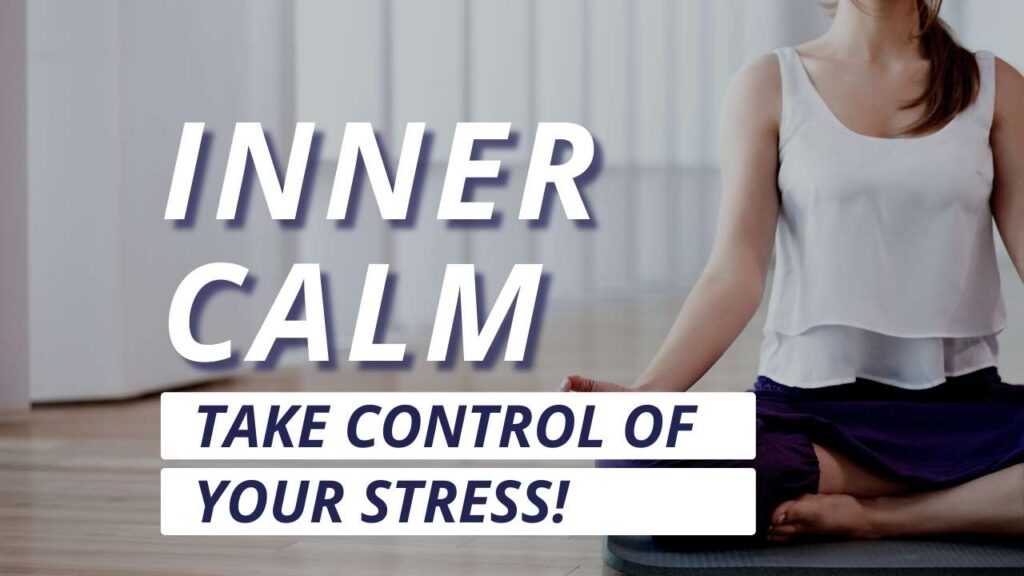Understanding the Stress Response (Introduction)
Do you know somebody who always looks to be cool under duress? They never seem to have a bad day. Things that would throw you into a frenzy of worry don't seem to affect them at all. What is their recipe? How can they remain calm when everything around them seemed to be crumbling?
The answer can be found in how people react to difficult situations.
Let's look at their polar opposite. This person may look more familiar to you. You've most likely met him or her before. That individual in your life who seems to attract stress and adversity. Their entire universe is turned upside down when you talk to them.
They are perplexed as to why they seem to experience more than their fair share of stress. The reason they are always worried, apprehensive, and usually suffering from some stress-related sickness or health concern is simple: their physical and mental health, like the “cool as a cucumber” people we just met, is directly connected to how they respond to stress.
You are going to experience stress in your life.
Regardless of who you are, where you live, your age, cultural background, or socioeconomic status, you will meet a plethora of stressful, high-anxiety events. Some things are unavoidable. This suggests that you will have to deal with them. And, for better or worse, how you deal with stress in your life can have a significant influence on your physical and mental health.
Unfortunately, when you allow stress to govern your life, your chances of having the following conditions skyrocket:
• High blood pressure
• Ulcers and upset stomach
• Chronic acid reflux and heartburn
• Elevated blood sugar levels and high blood pressure
• Weak immune system, making you susceptible to colds, flu, and dozens of other infections
• Rapid heartbeat, heart palpitations
• Cardiovascular issues
• Diabetes
• Backaches, headaches, and migraines
• Problems sleeping properly
• Constant tiredness
When doctors and health professionals discuss the physical and mental difficulties that stress sufferers incur, those concerns are truly just the tip of the iceberg. Medical specialists now realise that persistent emotional stress can have a harmful impact on all of your major organs.
If you give in to stress, it can kill you.
Simply shifting your response to a difficult circumstance puts you in control. You are aware of your tension, but you do not allow it to impact you. That is the purpose of this brief study: to provide tried-and-true tactics for giving you entire control over stress and anxiety, so you don't succumb to the damaging and perhaps fatal physiological and mental illnesses that an incorrect response to stress can cause.
Relaxing the Mind
Meditations on Mindfulness and Deep Breathing
Mindfulness is defined as something that makes you aware of your existence and expressed need. However, if you live your life expecting what could happen, you run the risk of carrying a knapsack of unpleasant events on your back. You can't relax if you're worried about things over which you have no control, like your past or future.
Close your eyes and breathe deeply and thoroughly when you want to relax your thoughts. Nothing should be “considered.” Simply focus on your breathing; take deep, full breaths. You are only acknowledging your existing condition of being. There are excellent mindfulness meditation MP3s, CDs, and downloads available for purchase online that have been shown to assist you in achieving this deep, calm state.
Controlled breathing may also be utilized to de-stress, increase your circulation, and promote your mental health. Sama Vritti, also known as equal breathing, may be able to assist you in achieving that elusive sensation of serenity and quiet.
Inhale deeply to a count of four. Inhale for four counts through your nose, then exhale for four counts through your nose. This method may be used whenever and anywhere you choose, but it's most useful right before bed if you're having difficulties falling asleep.
Abdominal breathing might be therapeutic as well. One hand on your stomach, one by your side. Inhale deeply through your nose, allowing your lungs to expand. Aim for 6 to 8 deep breaths each minute for 10 minutes a day to discover how clear and stress-free your mind becomes.
Visualisation
Your mind is the most complete and limitless computer ever built. The old saying “you can do anything if you set your mind to it” is completely accurate. Visualization for stress relief works because your subconscious believes everything you tell it to be real. This is why some psychotics and schizophrenics believe in some fantasy world.
They persuade their brain that it is correct, and it accepts it as their reality. You can use your amazing brain's programmability to your benefit. There are two ways to accomplish this. You can either 1) practice calming visualization on your own or 2) join in guided visualisation.
Put yourself in a calming environment for an increase in mental wellbeing and brain tranquility. You can lie down or sit in a comfortable chair; in any case, keep your spine straight and your legs uncrossed. Take slow, steady breaths and surround yourself with quiet music that you appreciate.
Only instrumental music is permitted. Imagine yourself in a peaceful natural environment when you feel yourself settling. You might try repeating positive affirmations like “control,” “peace,” and “success” over and over. You may carry out these basic steps anytime you have a few minutes free in your day.
To begin, buy a guided visualization CD or download an MP3 file. There are wonderful online services that offer a soothing, guiding voice and specialized music to successfully guide you through the process of visualisation for a stress-free mental state of being.
Body Scanning
Use your mind's power to “scan” your body, starting with your head and working your way down to your feet, progressively reducing stress from every part of your body.
This works much better in a calm, serene, low-light area. Lie on your back on the floor, arms at your sides, and legs straight out in front of you. Close your eyes and take a few calm, deep breaths. Recognize that you get more calm and serene with each breath.
Starting at the top and working your way down, mentally scan and de-stress your body. Consider how easily and totally this mental scan removes tension and worry from your body. Start at the top and work your way down once you've gotten to your feet.
There are a variety of body scan treatments that may be used to relax. Visualize a warm, colorful, or tranquil “beam” going down your body, gently reducing tension. Because each person's technique is unique, set aside 5 to 10 minutes each day to develop a progressive relaxation body scanning plan that works for you.
(Type “Progressive Body Scan for Relaxation” into your preferred search engine to uncover body scanning relaxation recommendations and techniques.)
Brought to you by: orientalmedicine.co.uk
The post How To Take Control Of Your Stress (Part 1) appeared first on https://buydroppeddomains.com
The post How To Take Control Of Your Stress (Part 1) appeared first on https://wookicentral.com
The post How To Take Control Of Your Stress (Part 1) appeared first on https://gqcentral.co.uk



